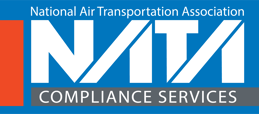A recent Forbes editorial by Joann Muller hardly painted a rosy picture for Business aviation. The article, titled Smelling Freedom, GM Better Not Get A Corporate Jet For Christmas was centered on GM. The US treasury had just announced plans to sell 200 million shares back to GM and its intentions to divest the remaining amount within the next 12-15 months. In her editorial, Joann said, “if GM goes out tomorrow and buys a jet for its executives, shareholders might as well dump their stocks now because it means all the progress the company has made over the past three and a half years has been wasted.” This led many, especially those outside the industry to wonder about the benefits of having a corporate plane.
Where opinions and words can be vague and up for interpretation, numbers tend to paint a better, more accurate picture because there is no emotion in numbers. NEXA Advisors analyzed companies in the S&P 500 large cap and 600 small cap between 2003 and 2010. The questions they wanted to answer were:
- Did the Great Recession and subsequent slow recovery period have a bigger or lesser shareholder value impact on S&P 500 companies who are business aviation operators, compared with their non-operating peers?
- Were these operators more resilient, thus able to recover more quickly and more convincingly than their peers, as measured by the key drivers of shareholder value?According to the report, “companies using business aviation in the S&P 500 mitigated revenue losses and recovered more quickly than non-users."
This data is not particularly surprising to those who are in the industry but clearly point out that if a company, say GM, goes out and purchases a jet, then GM stock holders have no immediate need to panic.
However, for those in the finance world, things like Earnings Before Interest, Taxes and Depreciation and Amortization (EBITDA), Return on earnings (ROE), Employee Growth, Revenue Growth and Net Income Growth are important for determining the value of stock. So how did these figures look?
These numbers continued to look good. Revenue Growth was over three times that of a non-user company, about 2.5 times greater for Net Income Growth and slightly less for EBITDA growth, Employee Growth was over three times greater and Return on earnings was over 150% of that of a non-user company.
These numbers are all great but there was more in the report that was noteworthy.
- Among the “50 Most Innovative Companies,” a compilation produced by BusinessWeek, 30 S&P 500 companies made the list. Of these, 100 percent were business aircraft users.
- Among the “100 Best Places to Work,” a compilation produced by Forbes, 32 S&P 500 companies made the list. Of these, 91 percent were business aircraft users.
- Among the “25 Best Customer Service Corporations,” a compilation produced by BusinessWeek, 8 S&P 500 companies made the list. Of these, 100 percent were business aircraft users.
- Among the “100 Best Brands,” a compilation produced by BusinessWeek, 48 S&P 500 companies made the list. Of these, 96 percent were business aircraft users.
- Among the “50 Most Admired Companies,” a compilation produced by Fortune, 43 S&P 500 companies made the list. Of these, 95 percent were business aircraft users.
- Among the “100 Best Corporate Citizens,” a compilation produced by The CRO, 98 S&P 500 companies made the list. Of these, 94 percent were business aircraft users.
In the conclusion, they found that “Business aviation is a tool that provides a unique ability for American companies to respond to severe economic downturns. In its unique role, business aviation is without substitute."
To read the NEXA Report in full, click here.
*Note: For those who would like a bit more insight into what some of those numbers mean, Revenue, the ‘top-line,' tends to be a good indicator of economic change. Rising revenue is good. This means a company is tapping into new markets, protecting current markets and remaining relevant to their customers. EBITDA tends to show how profitable a company is. This lets one know how much a company is earning when their costs are taken into account. If a company is spending $7 to earn $3, earnings can still rise if they are spending more but the EBITDA will show those weaknesses. The number of employees is also key because hiring shows strength and confidence. Companies who believe things in their company are going well can hire more people to support growth where those who are treading water, trying to stay afloat likely will not go out and hire new people unless necessary.

